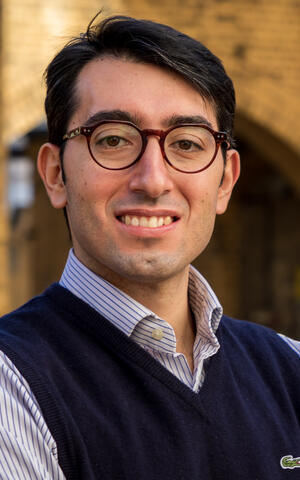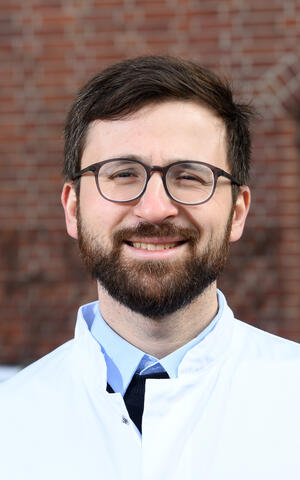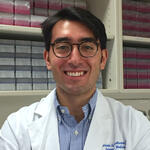ERC Starting Grants for Berlin scientists
A Starting Grant from the European Research Council (ERC) is considered a major seal of approval for junior researchers. In addition to prestige, it provides about €1.5 million in funding over five years while also opening doors to other opportunities and attracting high-quality applicants for PhD and postdoc positions. The ERC looks for novel approaches that could open up new frontiers and spur significant advances (“high risk, high reward” research). The researchers must have completed their doctorate within the last two to seven years and have a scientific track record showing great promise. Dr. Gabriele G. Schiattarella, Dr. Simon Haas and Professor Michael Sigal, all of them guest scientists at the Max Delbrück Center, have now been awarded this highly sought-after grant:
Schiattarella is head of the guest research group “Translational Approaches in Heart Failure and Cardiometabolic Disease” at the Max Delbrück Center in Buch, which is funded by the German Center for Cardiovascular Research (DZHK). He also works at the Department of Internal Medicine and Cardiology at the Charité – Universitätsmedizin Berlin. The ERC Starting Grant will allow him to launch his project KetoCardio, where he will investigate how ketone bodies – by-products of fat metabolism – impact on heart failure with preserved ejection fraction (HFpEF). He is receiving €1.8 million for his work.
Simon Haas leads the junior research group “Systems Hematology, Stem Cells & Precision Medicine” of the Berlin Institute of Health at Charité (BIH), which is part of the joint focus area “Single-Cell Approaches to Personalized Medicine” of the BIH, the Max Delbrück Center, and Charité. His team is based at the Berlin Institute for Medical Systems Biology of the Max Delbrück Center (MDC-BIMSB), where it operates as a guest group. He plans to use the ERC Starting Grant to study interactions between immune cells and leukemia cells in order to find out why immunotherapy is effective in some leukemia patients but not in others. His project is called “InteractOmics”.
Michael Sigal is a clinician scientist at the Charité Department of Hepatology and Gastroenterology. He also heads the Emmy Noether Independent Junior Research Group “Gastrointestinal Barrier, Regeneration and Carcinogenesis”, which is funded by the German Research Foundation and based at MDC-BIMSB. With his project “Revert,” the guest researcher hopes to shed light on how the gastrointestinal epithelium changes in the wake of an injury. This knowledge could pave the way for the development of therapies that target the underlying causes of inflammatory intestinal diseases and contribute to the prevention of colorectal cancer.
The projects in detail
Rebooting cardiac metabolism
Gabriele G. Schiattarella
HFpEF is a very common form of heart failure – more than 30 million people worldwide are affected by this syndrome. “In the years ahead, it will become the leading cause of heart failure,” says Schiattarella. In HFpEF, it is not the heart’s pumping power that is excessively impaired, but its capacity of relax (elasticity). As a result, the cardiac muscle cannot take in enough blood to supply the body with sufficient oxygen and nutrients. People with HFpEF experience a reduced exercise tolerance, fluid accumulation in the lungs and the rest of the body, and shortness of breath. Currently, little is known about the molecular mechanisms of the disease and barely any drugs exist to treat it.
Schiattarella’s group discovered that HFpEF patients have elevated levels of ketones in their blood, which are by-products of the body breaking down fat. When our cells do not receive sufficient glucose – during fasting or exercise, for example – the body burns fat instead. This produces ketones, or ketone bodies, which function as an alternative source of energy for cells. “They are powerful fuel for cell metabolism,” says Schiattarella. “Cells also use them to communicate changes in their metabolism.”
Schiattarella wants to investigate what it is that stimulates ketone metabolism in HFpEF and why. “It may be the body’s way of providing the affected heart muscle cells with more energy, or compensating for damage,” the researcher supposes. He also wants to clarify whether and how ketones, particularly the most common ketone ß-hydroxybutyrate (ß-OHB), regulate chromatin structure, gene transcription, and signaling in cardiac muscle cells – thus affecting their elasticity, for example. Finally, he wants to develop therapeutic strategies to further increase ketone levels in HFpEF – whether through diet adaptations, specific exercise training, or drugs.
The scientist and his team have a wide range of technologies at their disposal at the Max Delbrück Center. “We will develop various animal models and combine proteomics, transcriptomics, and genomics approaches,” says the researcher. “That and the project’s three main areas of focus – ketones metabolism, their signal transmission, and the development of ketone-based therapeutic strategies – make KetoCardio a big deal in cardiovascular research.”
How leukemia and immune cells interact
Simon Haas
Leukemia occurs when immature immune cells stop developing but keep dividing and eventually inundate the blood. There, they encounter mature and active immune cells that either recognize and kill the cancer cells or let them escape. So far, little is known about the interactions between immune cells and leukemia cells. “But gaining that knowledge would show us why the immune system sometimes overcomes the leukemia cells and sometimes fails,” says Haas. “And why immunotherapy is effective in some patients but not in others.”
Haas is planning to modify single-cell analysis so that the method can capture the interactions and communication between all immune cells and cancer cells. Haas and his team are located at MDC-BIMSB, which offers outstanding technical infrastructure for their work. “Instead of looking at individual cells, we’re aiming to investigate millions of cell pairs as they interact with each other,” he says. “These doublets will tell us who is binding to whom, and what happens in the process.”
The scientists are starting by investigating mice that have leukemia. By looking at their blood, the team can see how the disease develops at different stages, how it advances, and how it can be stopped. His clinical collaboration partners are providing Haas with samples from leukemia patients. “Once we understand what disease stage the cells are in when they meet, and the developmental stage of the immune cells and the cancer cells, we’ll have a better understanding of how the immune response works and how the leukemia fights back,” he says.
Immunotherapies, which fight cancer using the body’s own immune system, are already being used in the treatment of leukemia. But they only work in a fraction of the patients who receive them. “If we can take cell pairs from the blood of patients for whom the therapy worked and compare them with pairs from patients who weren’t so lucky, we’ll hopefully be able to identify which circumstances need to be present for the immune system to beat the leukemia.” His goal is to be able to predict which patients are likely to benefit from immunotherapy (which is a very complex and costly form of treatment), and how the therapy can be refined so that it works in more patients.
Understanding the threshold to colorectal cancer
Michael Sigal
The stomach and intestines are exposed to a wide variety of external factors. They are therefore lined by a protective cell layer that is continually regenerated: the epithelium. Michael Sigal focuses primarily on stem cells, which are responsible for the continuous regeneration of this barrier between the body and the outside world. An Emmy Noether Independent Junior Research Group under his direction is investigating how these stem cells can potentially be damaged, and also how this damage contributes to the development of infectious and inflammatory diseases as well as cancer.
So far, the team has demonstrated that an injury of the intestinal mucous membrane can lead to a reorganization of cellular hierarchy. When stem cells located deep inside the mucous membrane die, they are replaced by fully differentiated cells from the surface. The latter are reprogrammed into stem cells and begin to divide, thus regenerating the mucous membrane. This regeneration process prevents bacteria in the gut from entering the bloodstream after an injury. However, Sigal hypothesizes that it may also represent the first step in the development of colorectal cancer.
“Cells from the surface of the epithelium come into contact with the microbiome – the bacteria that colonize our intestines – and their metabolites, some of which can cause DNA damage,” he says. “If they become stem cells, mutations can become fixed in the epithelium, disrupting the complex processes that normally ensure an equilibrium between cell division and differentiation – the first step towards the development of cancer.”
Over the next five years, he plans to elucidate what changes take place in the gastrointestinal epithelium in the aftermath of an injury. His project “Revert” will involve the use of technologies like single-cell sequencing and lineage-tracing to compare the daughter cells of normal stem cells with those of “replacement stem cells” and to document genetic changes over time. Sigal hopes to develop a fundamental understanding of which factors contribute to the manifestation of chronic diseases of the gut. This knowledge could pave the way for the development of therapies that target the underlying causes of inflammatory intestinal diseases and contribute to the prevention of colorectal cancer.
Text: Charité, BIH, Jana Ehrhardt-Joswig
Further information
- ERC Grantees at the Max Delbrück Center
- Simon Haas: Systems Hematology, Stem Cells & Precision Medicine
- Gabriele Schiattarella: Investigating the fundamental mechanisms of heart failure
- Michael Sigal: New PI strengthens exchange between MDC and Charité
- Max Delbrück Center
-
The Max Delbrück Center for Molecular Medicine in the Helmholtz Association (Max Delbrück Center) is one of the world’s leading biomedical research institutions. Max Delbrück, a Berlin native, was a Nobel laureate and one of the founders of molecular biology. At the locations in Berlin-Buch and Mitte, researchers from some 70 countries study human biology – investigating the foundations of life from its most elementary building blocks to systems-wide mechanisms. By understanding what regulates or disrupts the dynamic equilibrium of a cell, an organ, or the entire body, we can prevent diseases, diagnose them earlier, and stop their progression with tailored therapies. Patients should be able to benefit as soon as possible from basic research discoveries. This is why the Max Delbrück Center supports spin-off creation and participates in collaborative networks. It works in close partnership with Charité – Universitätsmedizin Berlin in the jointly-run Experimental and Clinical Research Center (ECRC), the Berlin Institute of Health (BIH) at Charité, and the German Center for Cardiovascular Research (DZHK). Founded in 1992, the Max Delbrück Center today employs 1,800 people and is 90 percent funded by the German federal government and 10 percent by the State of Berlin.











